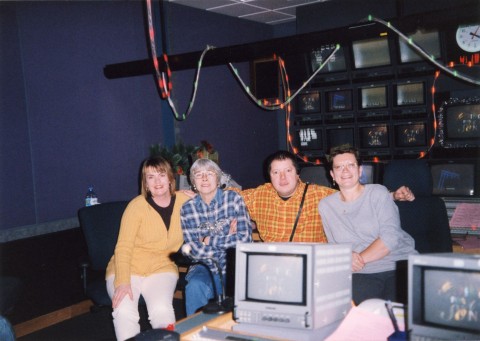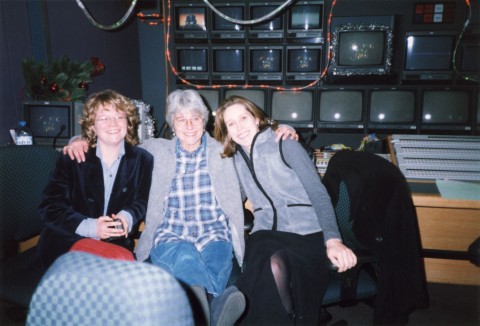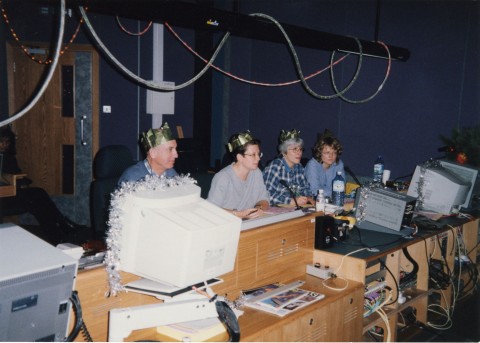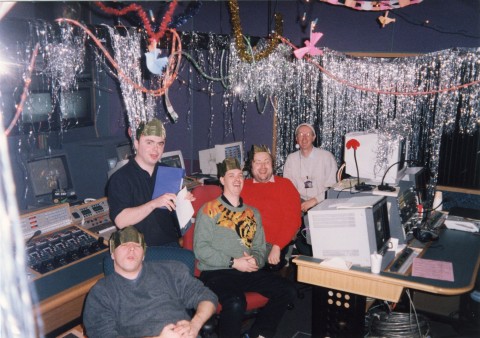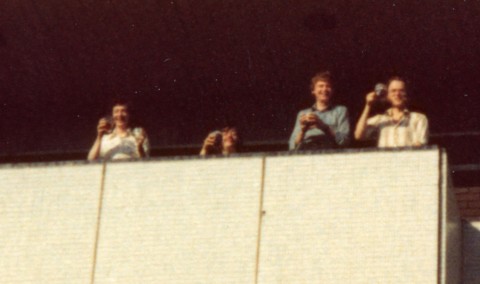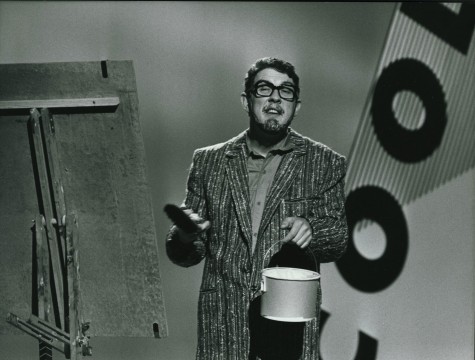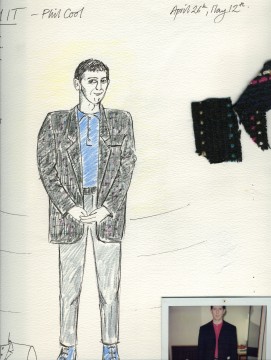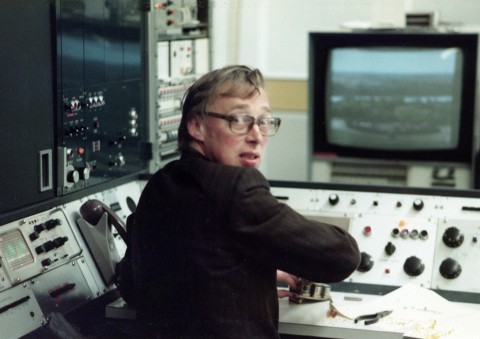Photo by Tim Savage, no reproduction without permission.
This photograph is of the Pebble Mill Canteen on the 7th floor of the office block. Tim took the photo in autumn 2004 when Pebble Mill had been emptied, prior to the building being demolished in 2005.
The Canteen was at the heart of Pebble Mill, sadly it looks so clean and lifeless in this photo. It had a excellent line in cheese scones, mid morning, and delicious cakes for afternoon tea. You never knew who you’d meet in the Canteen, you’d frequently bump in to actors in full costume and make-up taking a break from recording a drama in Studio A.
The following comments were posted on the Pebble Mill Facebook Group:
Becky Land: ‘I remember that if you timed it right you could get a warm banana and chocolate scone for elevenses. Welcoming when on an early news reading shift. Loved sitting amongst the Archers cast and listening to the well known voices.. and the brilliant view on a clear sunny day. ‘
Gordon Astley:..’I loved the canteen/restaurants from Gosta Green/ Broad st/ Pebble Mill. Only problem I had was with the whingers who complained daily…bearing in mind it was good, honest food, served by nice people…and it was all subsidised by some old lady lady’s licence fee.’
Stuart Gandy: ‘Oh! Pebble Mill Puddings – legendary’
Brian Johnson: ‘Canteens at Broad St and Carpenter Road were great too!’
Susan Astle: ‘Cheese scones……made it easier to cope with a hangover!’
Donald Steel: ‘And Sunday roasts! I knew staff who would come in specially !’
Pete Simpkin: ‘Well said Susan, you had to be in the queue at the prompt time of 1030!’
Neil Wilson: ‘Carl’s kingdom for many years. So much missed.’
Eurwyn Jones: ‘Who can remember some of the women who worked there ?
I remember Lil, Edna, Miss Rose and a blonde Scottish girl………’
Gordon Astley: ‘Donald…..after my WM Sunday show I would often had 4 Sundays plated up..took 2 round to Mum and Dad..and 2 for us. Had to smuggle the green plates and the covers back in on Monday !!!’
Pete Simpkin: ‘Eurwyn there was an Irish lady on the canteen staff called Mary, my wife who is Irish taught me some Irish phrases to try out on her, I think I was set up by some of these! Great and friendly staff in the canteen…sorry restaurant!’
Eurwyn Jones: ‘I well remember Lil that worked there took pity on me during the bread strike and she used to smuggle various loaves to me….. Bless her.’
Gordon Astley:. ‘talking of strikes (BTW I was the first person in the BBC in Birmingham to go on strike !) There was a strike on behalf of the canteen staff who were then berated by the pickets because they went into work. They told me “It’s ok for those journos etc…they earn a lot…we can’t afford to strike !”‘
Lynn Cullimore: ‘I remember Edna’s singing in the canteen. The cheese scones were to die for…nowhere else can you get a cheese scone the same! Many memories of christmas lunches there…served by management!’
Gordon Astley: ‘.Lynn..sometimes it was only time in the year you found out who was management !! Anyone got the scones recipe ?’
Pete Simpkin: ‘Re management I recall the times there were lift failures and those of us who could manage it would think nothing of stepping it out up the whole flight of stairs and then it became clear who were the management…..they were the ones appearing to be nonchalantly taking in the view on each landing trying hard to disguise their lack of breath!!
Gordon Astley:’..just out of interest re: the 1st ABS strike I remember walking out on a Saturday morning with Barry Lankester. The press was waiting. It was the 1st BBC strike. Barry said we had been set up. Most members weren’t working that day, took the day off, there was a trip to London, (and my dad was very upset with me)..I had only just joined the Beeb. My boss (Eddie Deighton?) told me to go..and see him on Monday. I did and he said that I should not worry….but it was a shame that no other union members turned up to back us in Broad Street. It still leaves a nasty taste in my mouth. Does anyone else have memories of that day…and what was the strike about…methinks it was Broadcasting in the ’70s. ?’

